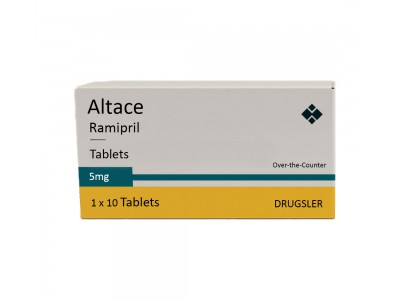Understanding Altace and Its Role in Hypertension Management
Altace, known generically as Ramipril, is a widely prescribed medication for managing high blood pressure, or hypertension. As an ACE inhibitor, Altace plays a crucial role in cardiovascular health by helping to relax blood vessels, thereby lowering blood pressure and reducing the risk of associated complications.
What Is Altace?
Altace is the brand name for Ramipril, a medication belonging to the class of drugs known as ACE inhibitors. It is commonly used to treat hypertension and heart failure and to improve survival after a heart attack. By inhibiting the activity of the angiotensin-converting enzyme, Altace helps to relax blood vessels, making it easier for the heart to pump blood.
The Renin-Angiotensin-Aldosterone System (RAAS)
To understand how Altace works, it's essential to grasp the function of the RAAS, a hormone system that regulates blood pressure and fluid balance. When blood volume is low, the kidneys secrete renin, leading to a cascade of reactions that produce angiotensin II, a potent vasoconstrictor that narrows blood vessels and increases blood pressure. Angiotensin II also stimulates the release of aldosterone, a hormone that prompts the kidneys to retain sodium and water, further elevating blood pressure.
Mechanism of Action: How Altace Lowers Blood Pressure
Inhibition of Angiotensin-Converting Enzyme
Altace exerts its antihypertensive effects primarily by inhibiting the angiotensin-converting enzyme (ACE), which is responsible for converting angiotensin I to angiotensin II. By blocking this conversion, Altace reduces the levels of angiotensin II, leading to vasodilation, or the widening of blood vessels. This vasodilation decreases peripheral resistance, thereby lowering blood pressure.
Reduction of Aldosterone Secretion
With decreased angiotensin II levels, there is less stimulation for aldosterone secretion. Lower aldosterone levels result in reduced sodium and water retention by the kidneys, decreasing blood volume and contributing to lower blood pressure.
Enhancement of Bradykinin Activity
Altace also increases the levels of bradykinin, a peptide that promotes vasodilation. Elevated bradykinin levels further aid in relaxing blood vessels, enhancing the blood pressure-lowering effect of the medication.
Pharmacokinetics of Altace
After oral administration, Altace is rapidly absorbed and converted into its active form, ramiprilat. Ramiprilat reaches peak plasma concentrations within a few hours and has a prolonged half-life, allowing for once-daily dosing. The medication is metabolized by the liver and excreted primarily through the kidneys.
Clinical Benefits Beyond Blood Pressure Reduction
Beyond lowering blood pressure, Altace offers additional cardiovascular benefits. It has been shown to reduce the risk of heart attack, stroke, and cardiovascular mortality in high-risk patients. By improving endothelial function and reducing arterial stiffness, Altace contributes to overall cardiovascular health.
Considerations and Potential Side Effects
While Altace is generally well-tolerated, some individuals may experience side effects such as cough, dizziness, or elevated blood potassium levels. It's important to monitor kidney function and electrolyte levels during treatment. Patients should consult their healthcare provider to ensure Altace is appropriate for their condition and to discuss any potential interactions with other medications.
Conclusion
Altace (Ramipril) is a potent antihypertensive medication that lowers blood pressure through multiple mechanisms, including inhibition of the angiotensin-converting enzyme, reduction of aldosterone secretion, and enhancement of bradykinin activity. Its comprehensive approach to managing hypertension and its additional cardiovascular benefits make it a valuable option in the treatment of high blood pressure and related conditions.

